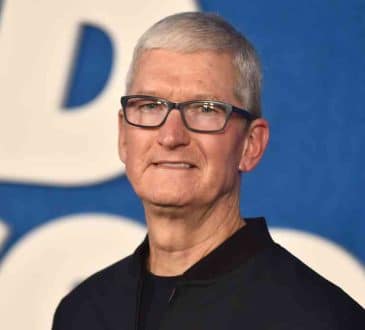It Could Be Time To Simplify Your Strategy

As organizations grow they often expand into new business units and geographies. They identify new opportunities to diversify a product, go into a peripheral business, and/or enter new markets. They also can acquire other companies to add capability, broaden a product portfolio, or become more vertically integrated.
All of this expansion has traditionally resulted in a lot more complexity. More structures, processes, rules, and responsibilities are defined to maintain control of the expanding workforce, and strategic focus gets hazy. It places more burden on the back-office function, increases the number of “strategic initiatives,” and adds more layers that separate leadership from the front line.
Many large organizations become bogged down in this complexity, and their performance starts to suffer. Focus is broken, and businesses often lose their edge. The quality of their innovation becomes poor, decision making slows, and execution is error-ridden. Smaller or more agile competitors begin to capture market share with their new innovative products and responsive services. This slide can happen quickly.
Consumers are very quick to provide product or service reviews on the plethora of rating sites, and negative reviews can quickly turn from whispers to full-blown movements. This is often when a new CEO is brought in to drive a turnaround. Interestingly, there is one common tactic that leaders deploy to successfully turn around a business: they shed all extraneous business units and return clarity and focus to the business. They simplify strategy.
Steve Jobs famously did exactly this at Apple. When he rejoined Apple in 1997, the first thing he did was complete a review of Apple’s product portfolio. At the time, Apple had over 20 distinct products, including my namesake: the Apple Newton. The company was clearly pulled too thin. Leadership had felt that Apple should be present in all industry segments that their competitors were in, so it continued to expand the product portfolio to establish this comprehensive presence. However, Apple’s unique value proposition became unclear to both employees and customers. The performance of the company reflected this in its continued slide, which by 1997 had become serious.

Jobs felt the company was months away from bankruptcy. In his mind he was crystal clear on where Apple would win: he did not want a product presence in every category; instead he wanted to build a few of the best products in the world. He moved quickly to sell off underperforming business units and reduced the number of products from 20 to four. He removed legacy leadership and anyone else he felt was not pulling their weight and carefully selected new talent in key roles who were empowered to act and innovate as they saw fit. He removed 11 years’ worth of complex and complicated processes and management hierarchy. He stripped out committees and cumbersome approval processes and freed teams to truly innovate on the top strategic priorities. The new simplified strategy was clear, and Jobs was uncompromising in bringing it to life through transforming structure, process, roles, responsibilities, and culture. Apple was now in the business of building a small set of products that would change the world. And now everyone knew it and could work in unison to realize it. Needless to say, the simplification of Apple produced incredible results, which is reflected in Apple currently being the most valuable company in the world.
The success of Apple’s turnaround is evidence that large organizations that are failing to perform often have to shrink to rediscover their mojo. They have to shed non-core businesses, streamline or remove clunky processes, reduce corporate costs, and remove redundant controls and checks.
Another example is Lego. Lego experienced a great run of success from its founding in 1932 up until the 1990s. This success was due to keeping the company focused on its core business: producing interlocking plastic bricks. But in the 1990s the company began to rapidly expand into peripheral businesses, such as television programs, video games, theme parks, retail stores, and others. All of these businesses pulled resources and clouded strategic focus. None of them were successful and led to Lego experiencing a decade of decline. Then enter a new CEO in 2004: Jørgen Vig Knudstorp. Like Jobs, Knudstorp completed his organizational review and then quickly set about returning focus to the organization. He knew that he needed to return the company to its core to enable profitable and sustainable growth.

He shrunk the portfolio of assets, including selling part of the Legoland theme park, and either closed down or halted expansion plans across the confusing array of business units—dolls, magazines, computer games, television shows, software, and so on. But Knudstorp didn’t stop there; he even simplified the Lego core offering by reducing the number of colors and components used. The newfound simplification of the business and the return to the core business liberated focus and innovation. Teams were now able to rejuvenate and refresh their key product: interlocking bricks. A number of innovations sparked renewed market interest in their product, including giving customers the ability to design their own Lego set and increasing co-branded products like the Frozen and Star Wars lines. Since the simplification of Lego’s strategy, the company has achieved a 400% increase in revenues and has boosted the profit margin from –21% to +34%—an incredible turnaround due in large part to simplifying strategy.
There are many other examples of organizations that have simplified their strategy to turnaround their business. IBM sold off their PC business as part of their turnaround. McDonald’s has shrunk significantly since their new CEO, Steve Easterbrook, took over in 2015, and positive results are returning. Clearly, reducing strategic distractions and becoming clearer on the focus of the company is an effective method of breathing life back into ailing businesses.
Have you read?
# Top 500 Best Universities In The World For 2019 : Medicine And Health Science Degrees. | Life Science Degrees. | Physical Science Degrees. | Psychology Degrees. | Arts and Humanities Degree. | Education Degrees. | Social Sciences Degrees. | Business And Economics Degrees. | Computer Science Degrees. | Engineering And Technology Degrees.
Add CEOWORLD magazine to your Google News feed.
Follow CEOWORLD magazine headlines on: Google News, LinkedIn, Twitter, and Facebook.
This report/news/ranking/statistics has been prepared only for general guidance on matters of interest and does not constitute professional advice. You should not act upon the information contained in this publication without obtaining specific professional advice. No representation or warranty (express or implied) is given as to the accuracy or completeness of the information contained in this publication, and, to the extent permitted by law, CEOWORLD magazine does not accept or assume any liability, responsibility or duty of care for any consequences of you or anyone else acting, or refraining to act, in reliance on the information contained in this publication or for any decision based on it.
Copyright 2024 The CEOWORLD magazine. All rights reserved. This material (and any extract from it) must not be copied, redistributed or placed on any website, without CEOWORLD magazine' prior written consent. For media queries, please contact: info@ceoworld.biz
SUBSCRIBE NEWSLETTER








